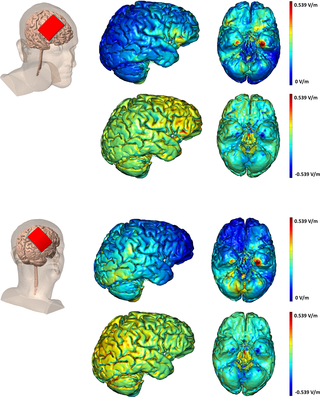[Update 5/15/15 More or less debunked, at least a much better understanding of the anomalies of this particular study, from Nathan Whitmore’s rebuttal.] Would only now like to see this replicated with tDCS applied during testing. i.e. In this study tDCS was administered prior to the test (‘offline’ as opposed to ‘online’). But for those of us who are looking to tDCS for potential cognitive enhancement, this is a significant study. Posted to Reddit by Gwern!
Transcranial direct current stimulation (tDCS) modulates excitability of motor cortex. However, there is conflicting evidence about the efficacy of this non-invasive brain stimulation modality to modulate performance on cognitive tasks. Previous work has tested the effect of tDCS on specific facets of cognition and executive processing. However, no randomized, double-blind, sham-controlled study has looked at the effects of tDCS on a comprehensive battery of cognitive processes. The objective of this study was to test if tDCS had an effect on performance on a comprehensive assay of cognitive processes, a standardized intelligence quotient (IQ) test. The study consisted of two substudies and followed a double-blind, between-subjects, sham-controlled design. In total, 41 healthy adult participants completed the Wechsler Adult Intelligence Scale, Fourth Edition (WAIS-IV) as a baseline measure. At least one week later, participants in substudy 1 received either bilateral tDCS (anodes over both F4 and F3, cathode over Cz, 2mA at each anode for 20 minutes) or active sham tDCS (2mA for 40 seconds), and participants in substudy 2 received either right or left tDCS (anode over either F4 or F3, cathode over Cz, 2mA for 20 minutes). In both studies, the WAIS-IV was immediately administered following stimulation to assess for performance differences induced by bilateral and unilateral tDCS. Compared to sham stimulation, right, left, and bilateral tDCS reduced improvement between sessions on Full Scale IQ and the Perceptual Reasoning Index. This demonstration that frontal tDCS selectively degraded improvement on specific metrics of the WAIS-IV raises important questions about the often proposed role of tDCS in cognitive enhancement.

